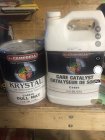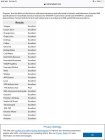I'm getting tired of rattle can lacquer I'd like to look into a touch up spray gun and use that to spray with. I'd hope I had better control and a thicker product rather than having to build up so many layers. I've read here that rattle can lacquer is thinned down a lot so it sprays easier.
I'm wondering if anyone has tried a water based lacquer in a spray gun? It seems the smell would be much less not to mention clean up. I see Woodcraft has General on clearance. https://www.woodcraft.com/categorie...shes&featured[]=Clearance&types[]=Water+Based Makes me wonder why they're clearing it out?
I'm wondering if anyone has tried a water based lacquer in a spray gun? It seems the smell would be much less not to mention clean up. I see Woodcraft has General on clearance. https://www.woodcraft.com/categorie...shes&featured[]=Clearance&types[]=Water+Based Makes me wonder why they're clearing it out?


